If for one reason or another you try to perform System Restore on your Windows 11 or Windows 10 device but you get an error prompt stating Catastrophic Failure with error code 0x8000FFFF, then this post is intended to help affected PC users resolve the issue by applying any of the suggested fixes.
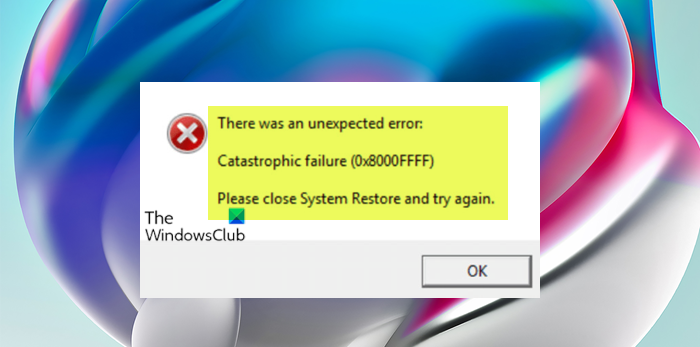
When this issue occurs, you may receive similar error message and code along the following lines;
There was an unexpected error:
Catastrophic failure (0x8000FFFF)
Please close System Restore and try again.
You may encounter this issue due to one or more of the following reasons;
- Malware infection
- Corrupted system files
- Incorrectly loaded drivers
- Faulty or conflicting software or programs
- Windows Update issue
System Restore Error 0x8000FFFF Catastrophic Failure
If you have encountered the System Restore Error 0x8000FFFF Catastrophic Failure on your Windows 11/10 PC, you can try our recommended solutions below in no particular order to resolve the issue on your system.
- Perform System Restore in Clean Boot state
- Perform System Restore in Safe Mode
- Perform System Restore via Advanced Options
- Modify the registry
- Check the status of Services
Let’s take a look at the description of the process involved concerning each of the listed solutions.
Before you try the solutions below, you can do the following, and after each task see if you can carry out the restore operation without issues:
- Restart your PC.
- Make sure you’re logged in as Administrator.
- Make sure all device drivers are updated on your system.
- Run SFC scan. Depending on the outcome, you may have to follow up with DISM scan.
- Run a full system antivirus scan with Windows Defender or any reputable third-party AV product.
1] Perform System Restore in Clean Boot state
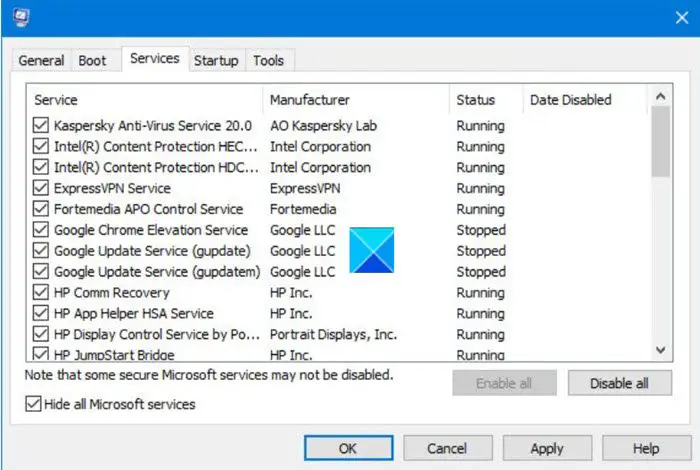
You can begin troubleshooting to fix the System Restore Error 0x8000FFFF Catastrophic Failure that has occurred on your Windows 11/10 PC by clean booting your system.
Unnecessary system and cache files, processes, services present or running on your computer can trigger this error. In this case, you can Clean Boot (an environment where only basic and essential services run and there is no issue being triggered by third party applications or additional built-in features) your device and then try the restore operation in that system state and see if the issue in hand is resolved. Otherwise, try the next solution.
2] Perform System Restore in Safe Mode
Similar to Clean Boot but with different functionality (Clean Boot disables third-party add-ons that normally load at Startup, while Safe Mode disables all but the most basic operating system components, presuming that there may be a conflict with one of the Windows services), Safe Mode starts Windows in a basic state, using a limited set of files and drivers. If a problem doesn’t happen in safe mode, this means that default settings and basic device drivers aren’t causing the issue.
This solution requires you to boot your PC into Safe Mode and then try the restore operation and see if the procedure completes successfully without issues. Else, try the next solution.
3] Perform System Restore via Advanced Options
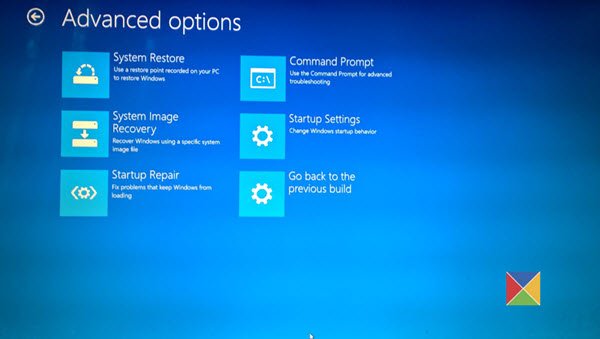
The System Restore feature is available in Advanced Recovery Options. This is useful in cases, where you’re unable to boot succesfully to the desktop to access this recovery utility normally. Although this isn’t the case here, you can try and perform System Restore via Advanced Options and see if you can complete the task successfully.
4] Modify the registry
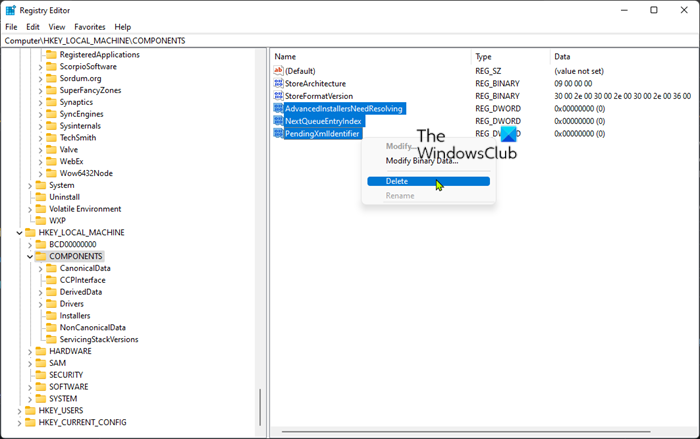
If there are corrupted registry key present on your system, you may encounter the issue in focus. This solution requires you to delete the following registry keys if present on your Windows 11/10 computer:
- AdvancedInstallersNeedResolving
- NextQueueEntryIndex
- PendingXmlIdentifier
Since this is a registry operation, it is recommended that you back up the registry or create a system restore point as necessary precautionary measures. Once done, you can proceed as follows:
- Press Windows key + R to invoke the Run dialog.
- In the Run dialog box, type regedit and hit Enter to open Registry Editor.
- Navigate or jump to the registry key path below:
HKEY_LOCAL_MACHINE\COMPONENTS
- At the location, on the right pane, right-click the identified registry keys above and select Delete from the context menu.
- Once done, exit Registry Editor.
- Restart PC.
On boot, try the restore operation and see if successful. If not, try the next solution.
5] Check the status of Services
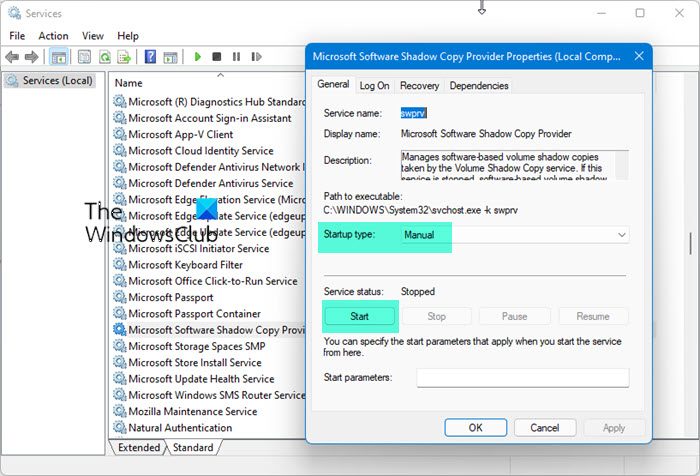
Type Services.msc in Start Menu Search Box, hit Enter. Make sure that the following Services have the following configuration:
- Volume Shadow Copy – Startup type: Manual – Service status: Running
- Task Scheduler – Startup type: Automatic – Service status: Running
- Microsoft Software Shadow Copy Provider Service – Startup type: Manual – Service status: Running
If they are not running, press the Start button to start the Service. Now try and see.
Hope this post helps you!
Related post: Fix Printer error 0x8000FFFF, Catastrophic failure.
How do I fix System restore error 0x8000ffff?
To fix system restore error 0x8000ffff on Windows 11/10, you can try the following workaround:
- Click Start, and then type System Restore in the Start Search box.
- Right-click System Restore, and then click Run as administrator.
- In the System Restore dialog box, click Next.
- Select a restore point, and then click Next.
- In the Confirm your restore point window, click Finish.
More suggestions: System Restore not working, failed or did not complete successfully
What is a computer catastrophic error?
Catastrophic failure is a complete, sudden, often unexpected breakdown in a machine, electronic system, computer or network. Such a breakdown may occur as a result of a hardware event such as a disk drive crash, memory chip failure or a surge on the power line.
Leave a Reply